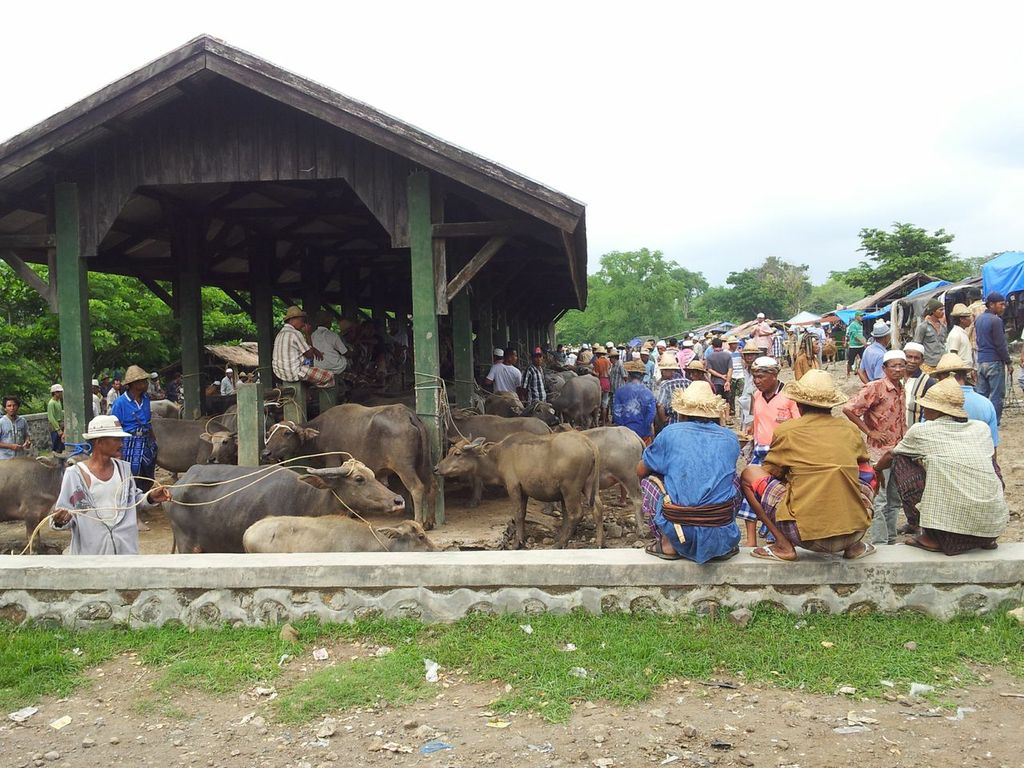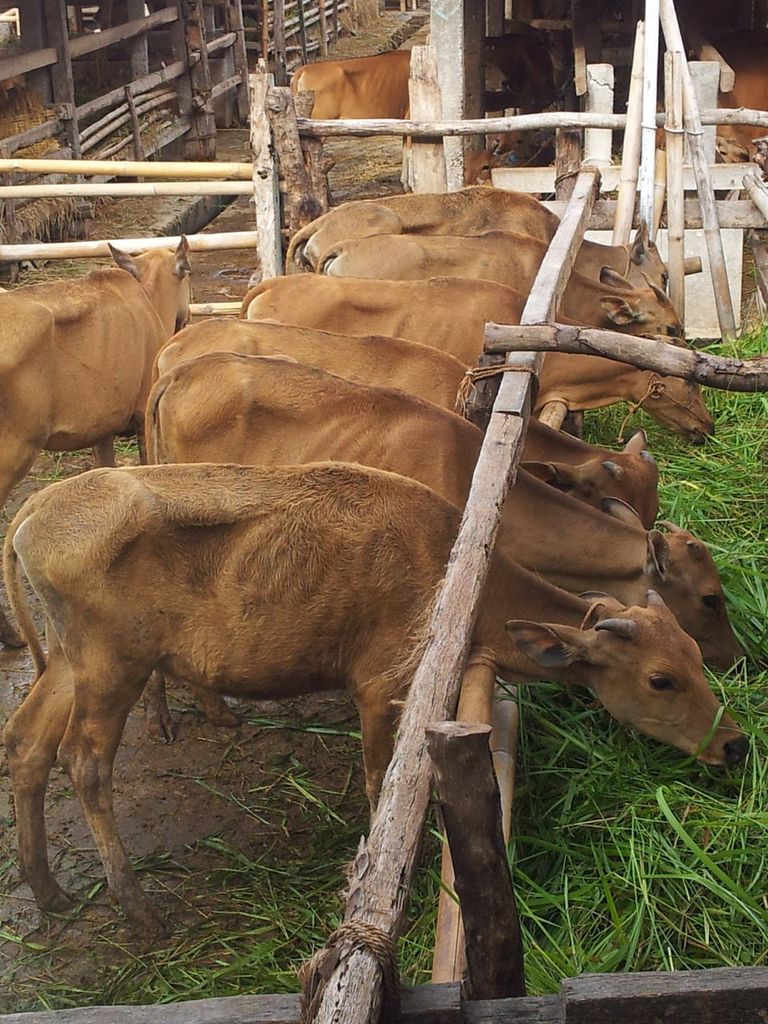The government’s latest approach is not the most effective or efficient way to promote food security
Risti Permani
When you visit Indonesia and see a bakso (meatball) seller pushing his cart, the bakso may not only be made of beef as commonly believed, but also offal and chicken. This is not to make it richer in flavour. It is a response to skyrocketing beef prices in Indonesia, currently at $11 per kilogram. Some blame this price increase on the government’s recent self-sufficiency programs.
The government’s approach to achieving beef self-sufficiency through protectionist trade policies, such as import quotas and strict regulations on live animal imports, is pushing up domestic beef prices and consequently lowering beef consumption in the long run. So, is the current approach actually enhancing food-security?
Changing diets of Indonesians
Currently growing at more than six per cent per year, the Indonesian economy is primarily driven by domestic consumption. In fact, its per capita beef consumption has been increasing in the last decade, partially due to urbanisation, modern retail penetration and an expanding middle class, estimated to be around 30 million people. This has made Indonesia an attractive market for beef and processed beef products.
This changing consumption pattern is not unique to Indonesia. Most Asian countries follow the classic case of adopting the so-called western diet as the middle class grows. This is characterised by constant or even decreasing per capita consumption of main staples such as rice and, in contrast, increasing per capita consumption of wheat and animal-source protein, including beef and dairy.
Nevertheless, Indonesia's per capita annual consumption of beef is amongst the lowest of the ASEAN countries at only 1.7 kilogram per annum. Despite wider access to modern retailers, Indonesian consumers still prefer 'warm' (freshly cut) meat from traditional ‘wet’ markets that sell local produce. Wet market meat is perceived to be fresher than frozen imported boxed beef. This warm meat is normally more expensive than imported beef. At the same time, industry demand for imported beef is quite strong, including from hotels, restaurants, catering services, processed food manufacturers and bakso sellers. The meat-processing sector, which is dominated by bakso manufacturers, absorbs about 55 per cent of imported meat. This strong industry demand is mainly driven by its affordability and importers' ability to supply specific cuts requested by the industries.
Issues with animal health and farm management make it difficult for Indonesian farmers to guarantee regular supplies of beef - Risti Permani
Self-sufficiency versus food security
Matching local consumption to local production capacity is a complex problem. About 70 per cent of beef is consumed in the western parts of Java, especially Jakarta. A concerning fact is that regions where most beef production occurs, such as West Nusa Tenggara and East Java, also have a high percentage of total beef consumers to total population (19 per cent). High beef absorption in production areas combined with existing problems along beef supply chains, including high inter-island transportation costs, raise concerns about how to supply regions such as Jakarta that have low production and high consumption levels.
Common animal health and farm management issues also challenge on-farm production. Most beef cattle farmers are smallholders with two-to-three cattle who sell their stock when they need cash (for school fees, children's wedding ceremonies, and payment of debts). This means they tend to be unreliable sources of beef production. Despite massive public investments in the livestock sector, productivity gains have been low at an average of less than five per cent per annum and volatile over recent decades.
The gap between local consumption and production was traditionally filled by live cattle and beef imports. This has changed since the Australian government placed a one-month export ban to Indonesia in mid-2011 in response to public concerns about the treatment of cattle. In the days following the ban, the Indonesian government expressed its confidence that domestic beef prices would not be affected by changes in imports. The same confidence seemingly led to the decision to cut both live cattle and beef import quotas. Two years on, beef prices continue to increase. The current price level is 69 per cent above 2011 prices and 45 per cent higher than 2012. This beef price hike should prompt the Indonesian government to ask whether its current approach to self-sufficiency is promoting food security.
Better beef policy
At The World Food Summit in 1996, the UN Food and Agriculture Organization (FAO) introduced a comprehensive and multi-dimensional concept of food security: ‘Food security exists when all people, at all times, have physical and economic access to sufficient, safe, nutritious food to maintain a healthy and active life.’ The concept is built on four pillars: availability, access, utilisation and stability of the other three aspects. Clearly, food security is not simply about having enough production. So far, the Indonesian government has not been able to provide all people access to affordable beef products. In a country where more than 100 million people still live on less than $2 a day, consuming beef is a luxury and it should not be.
At the end of May 2013, Trade Minister, Gita Wirjawan, announced Indonesia's plan to increase and bring forward an import quota on prime beef cuts distributed to hotels, restaurants and the hospitality industry in general as part of the government’s attempts to control beef prices. This may improve Indonesia's trade relationships with Australia, which were tested by the government’s decision to impose import quotas, but it won’t help meet demand for beef from low-income consumers.
Another plan is to revitalise the role of the National Logistics Agency(BULOG)to distribute beef and control beef prices. But BULOG has a poor reputation because of the way it handled rice pricing in the past. Some have also criticised this plan based on concerns that state intervention might deter private investors from investing in beef supply chains.
One sensible response to current problems is for the government to rethink its strategy. Investment in livestock research and development may be one of the best options to help farmers adopt improved technologies and farm management practices and to provide farmers with easier market access. In the meantime, the Indonesian government must maintain a more strategic trade policy. Indonesia has an excellent pool of multi-disciplinary experts to formulate strategic trade policy and develop strategies to improve productivity in the livestock sector. But above all, this depends on whether the government prioritises security or self-sufficiency.
Dr Risti Permani (risti.permani@adelaide.edu.au) is a Global Food Studies research fellow in the Faculty of Professions at the University of Adelaide.

